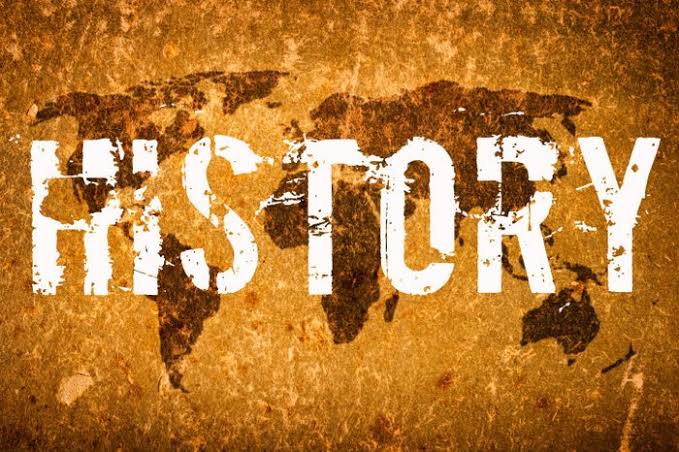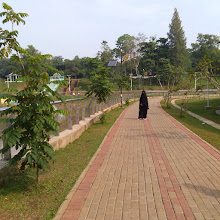Hello every body...
Today I'm gonna ask you to learn about recount text(historical event)
Firstly, I'll let you read the following passage.
Recount Text
Social function, Definition, Generic structures, Language features and examples.
Social function of the recount text:
to retell events for the purpose of informing or entertaining
Definition of the recount text:
Recount text is a text which retells events or experiences in the past. Its purpose is either to inform or to entertain the readers. There is no complications among the participants and that differentiates from narrative text. A recount text has an orientation, a series of events in chronological order, personal remarks on the events, and a reorientation that “rounds off” the sequence of events.
Generic Structures of the recount text:
Orientation: Introducing the participants, place and time.
Events: Describing series of event that happened in the past.
Reorientation: It is optional. Stating personal comment of the writer to the story
Language Features of the recount text:
Introducing personal participant; I, my group, etc
Using chronological connection; then, first, etc
Using linking verb; was, were, saw, heard, etc
Using action verb; look, go, change, etc
Using simple past tense
When writing the recount text you should:
Focus on individual people i.e. use the words, I or we, my group, my family etc.
Use words which indicate when (e.g. after lunch) and where the events took place (e.g. in the shed)
Write in the past tense e.g. had, visited
Use action words e.g. went, helped
Example of historical events:
1. Midway
The Battle of Midway was a decisive naval battle in the Pacific Theater of World War II that took place on 4–7 June 1942, six months after Japan's attack on Pearl Harbor and one month after the Battle of the Coral Sea.[6][7][8] The United States Navy under Admirals Chester W. Nimitz, Frank J. Fletcher, and Raymond A. Spruance defeated an attacking fleet of the Imperial Japanese Navy under Admirals Isoroku Yamamoto, Chūichi Nagumo, and Nobutake Kondō near Midway Atoll, inflicting devastating damage on the Japanese fleet that proved irreparable. Military historian John Keegan called it "the most stunning and decisive blow in the history of naval warfare",[9] while naval historian Craig Symonds called it "one of the most consequential naval engagements in world history, ranking alongside Salamis, Trafalgar, and Tsushima Strait, as both tactically decisive and strategically influential".[10]
Battle of Midway
Part of the Pacific Theater of World War II
SBD-3 Dauntless bombers of VS-8 over the burning Japanese cruiser Mikuma on 6 June 1942.jpg
U.S. Douglas SBD-3 Dauntless dive bombers of VS-8 from USS Hornet about to attack the burning Japanese cruiser Mikuma for the third time on 6 June 1942
Date 4–7 June 1942
Location
Midway Atoll
28°12′N 177°21′W
Result American victory
Belligerents
United States
Japan
Commanders and leaders
Chester W. Nimitz
Frank Jack Fletcher
Raymond A. Spruance
Isoroku Yamamoto
Nobutake Kondō
Chūichi Nagumo
Tamon Yamaguchi †
Units involved
Pacific Fleet
Task Force 16
Task Force 17
Midway Garrison
USAAF
USMC
Empire of Japan Combined Fleet
1st Fleet
2nd Fleet
5th Fleet
11th Air Fleet
Strength
3 fleet carriers
7 heavy cruisers
1 light cruiser
15 destroyers
233 carrier-based aircraft
127 land-based aircraft
16 submarines
1st Carrier Striking Force:
4 fleet carriers
2 battleships
2 heavy cruisers
1 light cruiser
12 destroyers
248 carrier-based aircraft
16 floatplanes
Midway Support Force:
4 heavy cruisers
2 destroyers
12 floatplanes
Did not participate in battle:
2 light carriers
5 battleships
4 heavy cruisers
2 light cruisers
~35 support ships
Casualties and losses
1 fleet carrier sunk
1 destroyer sunk
~150 aircraft destroyed
307 killed,[3] including 3 killed as prisoners
4 fleet carriers sunk
1 heavy cruiser sunk
1 heavy cruiser damaged
248 aircraft destroyed
3,057 killed
37 captured
The Japanese operation, like the earlier attack on Pearl Harbor, sought to eliminate the United States as a strategic power in the Pacific, thereby giving Japan a free hand in establishing its Greater East Asia Co-Prosperity Sphere. The Japanese hoped another demoralizing defeat would force the U.S. to capitulate in the Pacific War and thus ensure Japanese dominance in the Pacific. Luring the American aircraft carriers into a trap and occupying Midway was part of an overall "barrier" strategy to extend Japan's defensive perimeter, in response to the Doolittle air raid on Tokyo. This operation was also considered preparatory for further attacks against Fiji, Samoa, and Hawaii itself.
The plan was handicapped by faulty Japanese assumptions of the American reaction and poor initial dispositions. Most significantly, American cryptographers were able to determine the date and location of the planned attack, enabling the forewarned U.S. Navy to prepare its own ambush. Four Japanese and three American aircraft carriers participated in the battle. The four Japanese fleet carriers—Akagi, Kaga, Sōryū and Hiryū, part of the six-carrier force that had attacked Pearl Harbor six months earlier—were sunk, as was the heavy cruiser Mikuma. The U.S. lost the carrier Yorktown and the destroyer Hammann.
After Midway and the exhausting attrition of the Solomon Islands campaign, Japan's capacity to replace its losses in materiel (particularly aircraft carriers) and men (especially well-trained pilots and maintenance crewmen) rapidly became insufficient to cope with mounting casualties, while the United States' massive industrial and training capabilities made losses far easier to replace. The Battle of Midway, along with the Guadalcanal campaign, is widely considered a turning point in the Pacific War.
2. Indonesian Independence day
Independence Day (Indonesian: Hari Kemerdekaan, colloquially known as Tujuhbelasan (the seventeenth) is a national holiday in Indonesia commemorating the anniversary of the Indonesia's Proclamation of Independence on 17 August 1945.It was made a national holiday by then-President Sukarno in 1953.
Independence Day
Pengibaran Bendera Merah Putih, Peringatan Hari Proklamasi Kemerdekaan Indonesia.jpg
Flag hoisting ceremony
Official name
Hari Kemerdekaan
Observed by
Indonesians
Type
National
Significance
Marks the declaration of independence of Indonesia
Date
17 August
Next time
17 August 2020
Frequency
annual
Ceremonies and festive events are held throughout the country to celebrate this national day, including flag hoistings, local games and neighbourhood competitions, patriotic and cultural parades. Discounts are offered by participating shopping centres or businesses.
On this day, all Indonesian national televisions broadcast the National Independence Day Ceremony live from the Merdeka Palace in Jakarta. Televisions also often air Indonesian patriotic songs, nationalistic-themed films, advertisements, and talkshows
3. G30SPKI movement
The Thirtieth of September Movement (Indonesian: Gerakan 30 September, abbreviated as G30S, also known by the acronym Gestapu for Gerakan September Tiga Puluh, Thirtieth of September Movement) was a self-proclaimed organization of Indonesian National Armed Forces members who, in the early hours of 1 October 1965, assassinated six Indonesian Army generals in an abortive coup d'état, resulting in the unofficial but more accurate name of Gestok, for Gerakan Satu Oktober, or First of October Movement. Later that morning, the organisation declared that it was in control of media and communication outlets and had taken President Sukarno under its protection. By the end of the day, the coup attempt had failed in Jakarta at least. Meanwhile, in central Java there was an attempt to take control over an army division and several cities. By the time this rebellion was put down, two more senior officers were dead.
In the days and weeks that followed, the army, socio-political, and religious groups blamed the coup attempt on the Communist Party of Indonesia (PKI). Soon a mass purge was underway, which resulted in the imprisonment and death of real or supposed Communists Party members and sympathizers. Under the New Order, and sometimes used by the current government, the movement was usually referred to as "G30S/PKI" by those wanting to associate it with the PKI.
Investigations and questioning of Suharto's version of the events were long obstructed in Indonesia. The CIA initially believed that Sukarno orchestrated all of it. Despite this, several outside sources found inconsistencies and holes in the army claims, notably Benedict Anderson and Ruth McVey who wrote the Cornell Paper that challenged it.
Sources : Wikipedia
Well... I plan to give some activities to do to know your ability in reading to get some information about other historical events.
Here we go...
So, let me tell ur activities today
1. Choose 1 of the following events:
Youth pledge
Hiroshima Nagasaki
Independence day
Bandung sea of fire
World war 1
World war 2
Tanjung Priok
Civil war
Supersemar
Cold war
Kartini's Day
2. Search the information about the history and read a historical event you have choosen
3. Summarize in 4 paragraph :
Paragraph 1 Orientation (introduction)
Paragraph 2 events
Paragraph 3 events
Paragraph 4 closing
Write in a document and send me e mail at eviepuspita86@gmail.com






0 Komentar